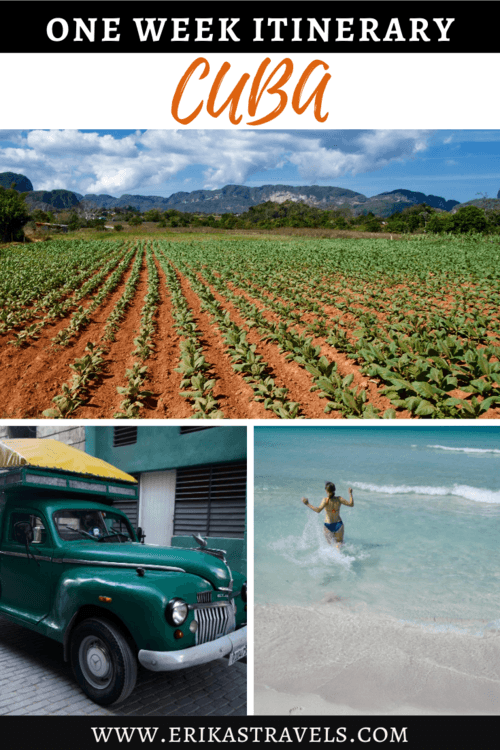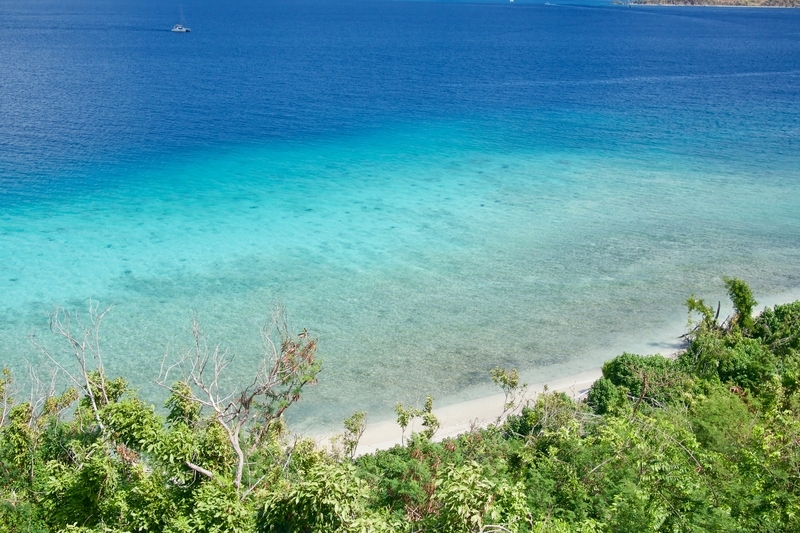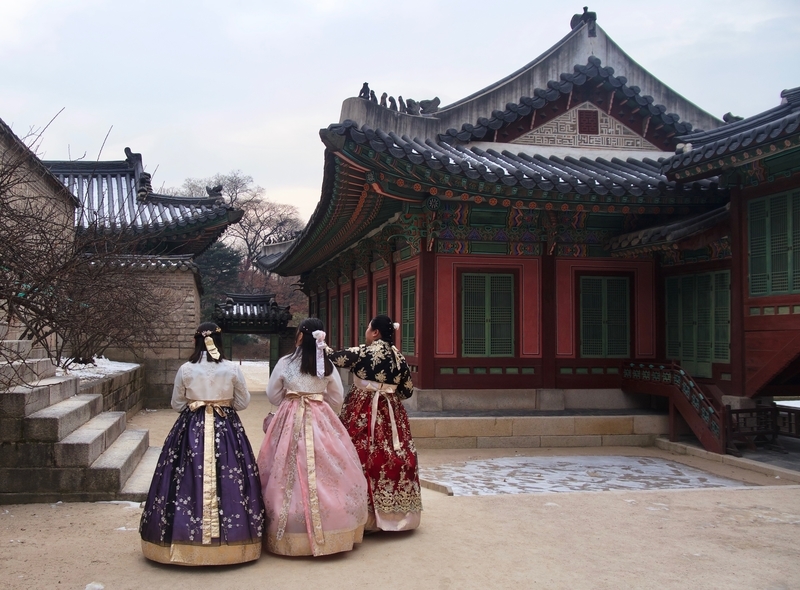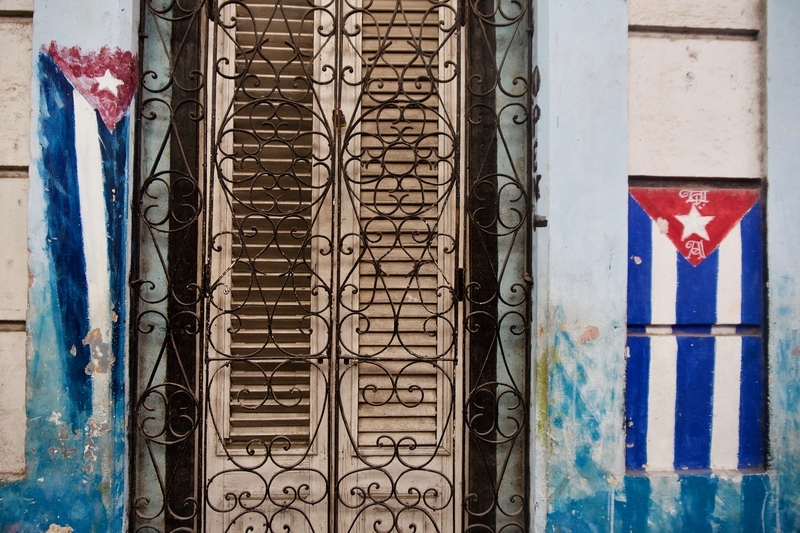
7 Unforgettable Days in Cuba: A One Week Itinerary
Seductive and secretive, Cuba has captured the imagination of American travelers for decades—not least because it has been shrouded in mystery for so long. The birthplace of salsa and producer of coveted Cuban cigars, it is a small country that has made a large splash around the globe both culturally and politically.
For years, Cuba was closed off to American tourists. And though people still found ways to visit the country illegally via Mexico or Canada, Cuba managed to avoid the levels of mass tourism found elsewhere in the Caribbean.
Yet, when Obama announced the loosening of restrictions on traveling to Cuba in 2014, thousands of Americans flocked to the Caribbean island. No longer out-of-bounds and illegal to reach, Cuba became a magnet of sorts for curious Americans who wished to peek behind the political barrier that divided Cuba from its northerly neighbor since the 1950s.
ONE WEEK IN CUBA: A PERFECT ITINERARY
Cuba is an island that defies Categorization. It is vibrant, complex, beautiful, idolized, chastised. With one week in Cuba, I did my best to visit the country’s top attractions and learn about its fraught history.
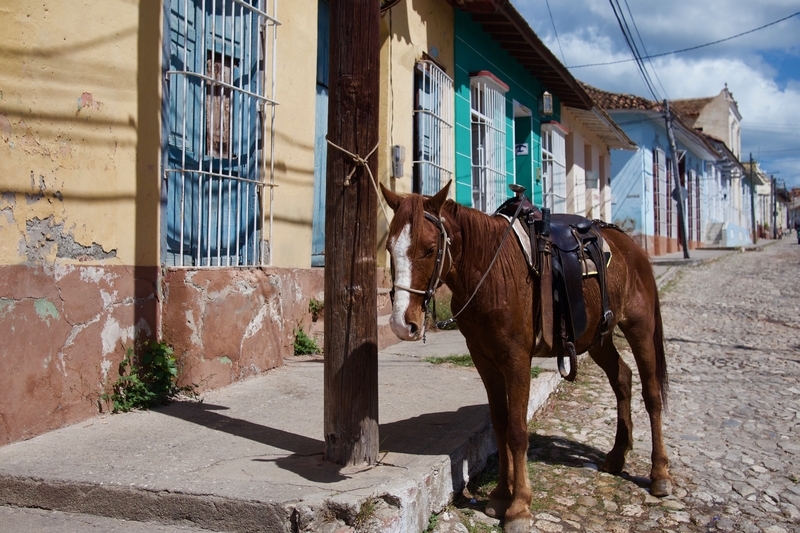
Val and I began our weeklong Cuba itinerary in Havana—Cuba’s achingly beautiful colonial city by the sea. While there, we stayed at a lovely AirBnb in Havana Vieja for two nights, before spending an additional two nights in the Vinales Valley. From Vinales, we took a shared cab to the perfectly-intact colonial gem of Trinidad, and finished out our week-long vacation at the sweeping sandy shores of Veradero.
DAYS 1 &2 ITINERARY: HAVANA
Havana is an open-air museum of classic cars and peeling paint and cobbled streets. The city’s heart–Havana Vieja–is magical and time-warped, like a page from the 1950s. With colorful colonial buildings lining bustling streets, Havana Vieja is at once European and yet totally its own. Nobody could have invented this bold, intoxicating and wholly original city. Music is everywhere. Color abounds. Children play makeshift baseball in winding alleyways. Every corner of the city is a painting waiting to be imagined.
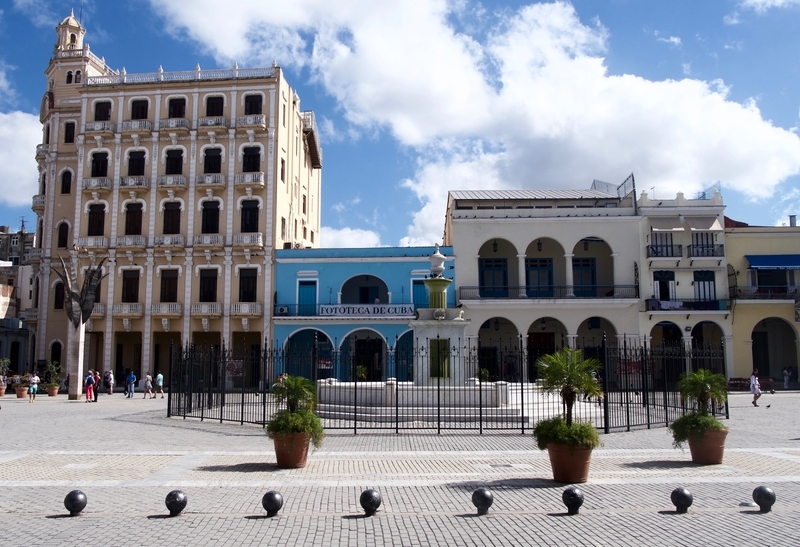
-
HAVANA VIEJA
On our first day in Havana, we walked around the old town and got lost amongst its maze of painted houses. Havana Vieja was founded by the Spanish in 1519 and became a stopping point en route to the New World from Europe. Its pretty pastel buildings are reminiscent of those in other colonial cities like Granada Nicaragua, Antigua Guatemala and San Juan Puerto Rico.
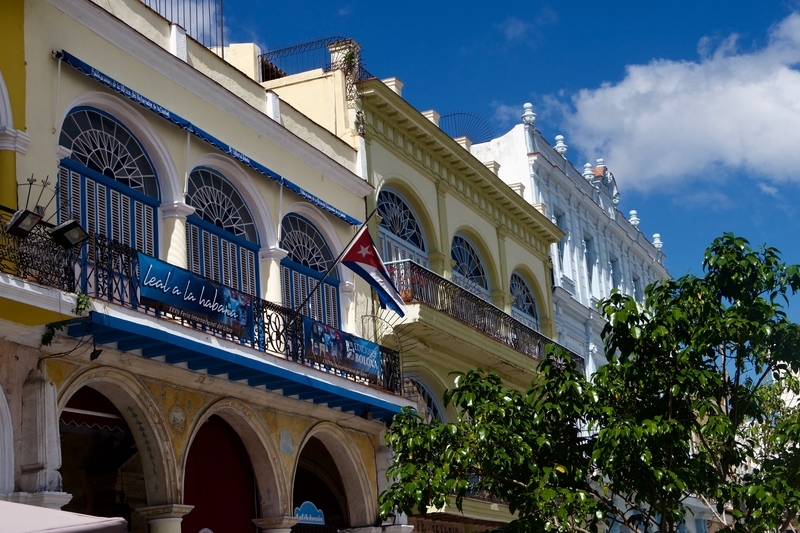
-
THE CUBAN REVOLUTION MUSEUM
We began our second day in Havana with a visit to the Revolution Museum.
The Revolution Museum focuses primarily on the events prior to, during and immediately after the Cuban Revolution. It presents the story of modern day Cuba, laden with a heavy dose of Anti-American sentiment and communist propaganda. In addition to convincing displays of Cuban nationalism, the museum houses a tank used by Fidel Castro during the 1961 Bay of Pigs, a replica of the Granma yacht and an assortment of military vehicles and aircraft.
Despite its heavy-handed political bias, visiting the Revolution Museum is one of the top things to do in Havana. The museum is a fascinating and sobering reminder of just how differently historical events can be remembered and memorialized.
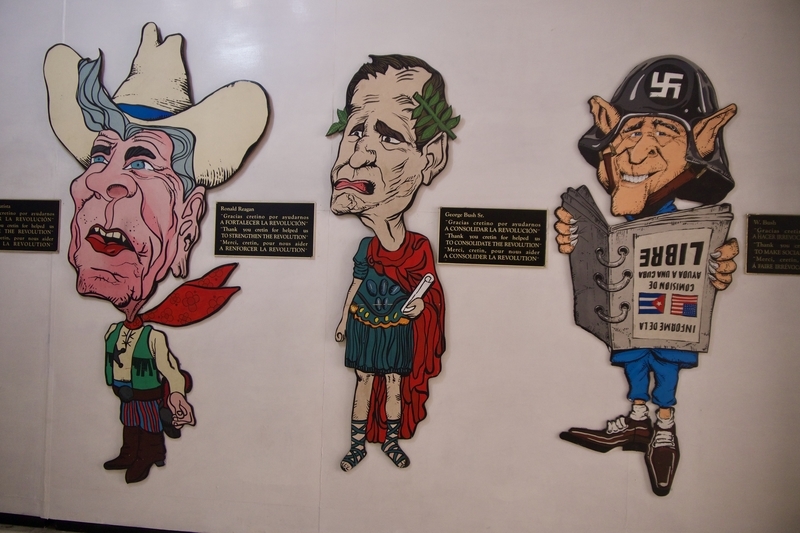
-
THE MALECON
After visiting the museum, Val and I strolled down the Malecon toward the new area of the city. The Malecon–a waterside roadway that runs eight kilometers from Havana Vieja to the modern part of the city–acts as an esplanade, a seawall, and a gathering place for young and old, tourists and locals, lovers and friends.
Along the Malecon’s waterfront promenade, Val and I witnessed families going for an afternoon stroll. We admired the endless stream of vintage cars as they zoomed past us on the nearby roadway. We listened to waves crash against the seawall, as the sun set behind the horizon. We sipped mojitos at the famous Hotel Nacional de Cuba.
Yet on the Malecon, we also saw a different Havana. Behind the fresh coats of paint, we saw a Havana that was crumbling, dirty and in disrepair.
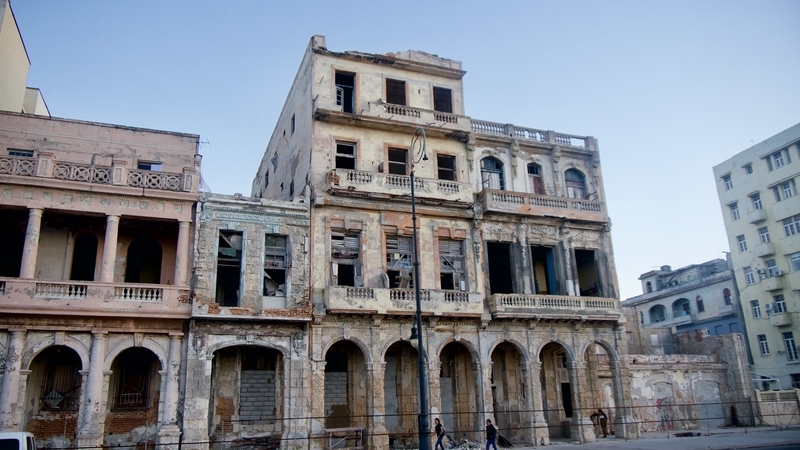
CUBA ITINERARY DAYS 3&4: VINALES
If Havana is Cuba’s seductive and charming facade, then Vinales is its weathered and time-tested hands.
A short two hour drive outside of Havana, the Viñales Valley was named a UNESCO World Heritage site for its dramatic landscape of karst mogotes, its traditional agricultural methods of farming, and its rich history. Here, the city’s glamour and romanticism give way to a tougher existence that is bound inextricably to the land.
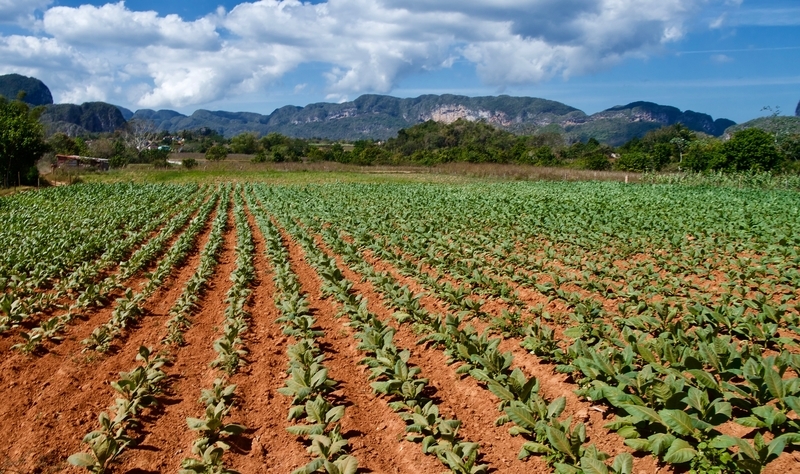
Despite Vinales’ longstanding placement on Cuba’s tourist trail, this slow and relaxed outpost offers a glimpse into the lives of rural Cubans. While tourists appear to outnumber locals and every home has transformed into a Casa Particular, Vinales steadfastly refuses to put on a show. It is an agricultural town, where front doors are left wide open, everyone knows their neighbors, and evenings are spent swaying gently back and forth on wooden rocking chairs.
-
VALLE DEL SILENCIO HORSEBACK TOUR
With one full day to explore Vinales, Val and I joined a horseback-riding tour through the Valle del Silencio.
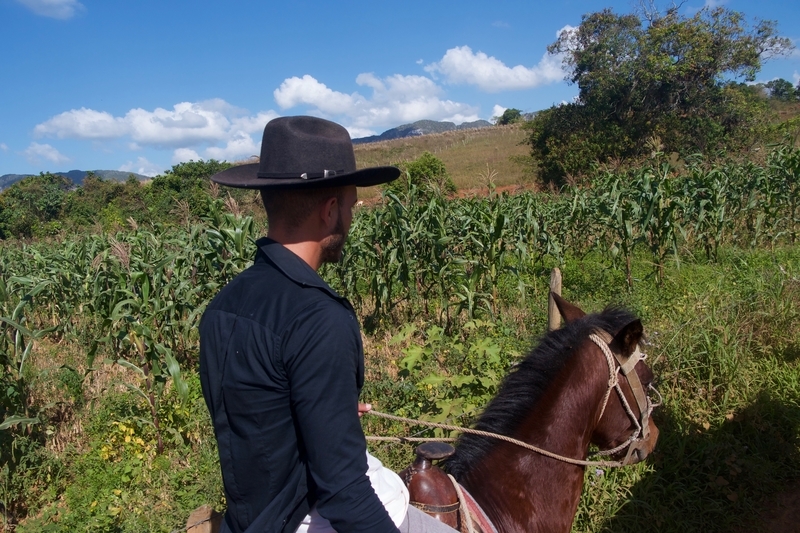
The tour brought us through idyllic countryside, while allowing us to learn a bit about Cuba’s tobacco-growing industry. In the Vinales Valley, cigar-chewing farmers plow their oxen through rust-colored tobacco fields. Tobacco leaves thrive here, due to the unique composition of the soil and the ideal climate of the area. On the tour, we witnessed the process by which tobacco leaves are dried, fermented and rolled into world-famous cigars.
The farmers of the Vinales Valley work the fields by hand. Once the tobacco leaves reach full maturity, they are harvested and hung in special curing barns, where they dry for months. After all moisture has been drained from the leaves, the Cuban government seizes 90 percent of the leaves. Tobacco farmers are left with a mere 10 percent, which they are allowed to roll into cigars and sell from their homes to tourists.
Our tour gave us an opportunity to speak with tobacco farmers and try the world-famous cigars, before continuing past the plantations, lakes and limestone peaks of the picturesque valley.
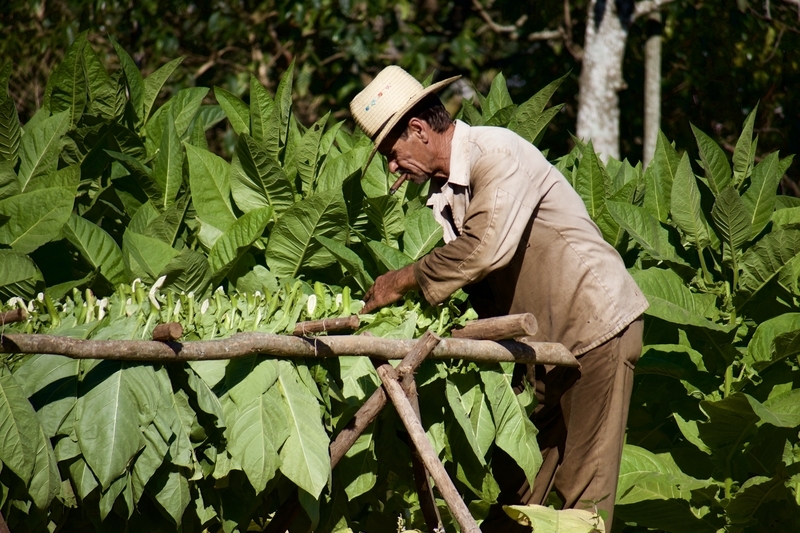
On the following day, Val and I left Vinales and headed toward the impeccably-preserved colonial gem of Trinidad.
DAYS 5 & 6 IN CUBA: COLONIAL TRINIDAD
Trinidad, Cuba’s best preserved colonial city, is a colorful open-air museum that feels frozen in time. With a unique mix of 1850s architecture and 1950s automobiles, Trinidad’s streets and alleyways are a postcard into the past.
Nestled in the verdant Escambrey Mountains and a short drive from one of the most beautiful beaches along Cuba’s southern coast, Trinidad’s old-world appeal consists of a unique blend of sights, sounds, and smells. In Trinidad, classic Chevys rumble down narrow lanes. Old men and women peer at passersby behind fancy wrought-iron windows. Rum flows freely from cafes and bars around town. The air is filled with sounds of salsa music and the clicking of horse hooves on cobbled streets.
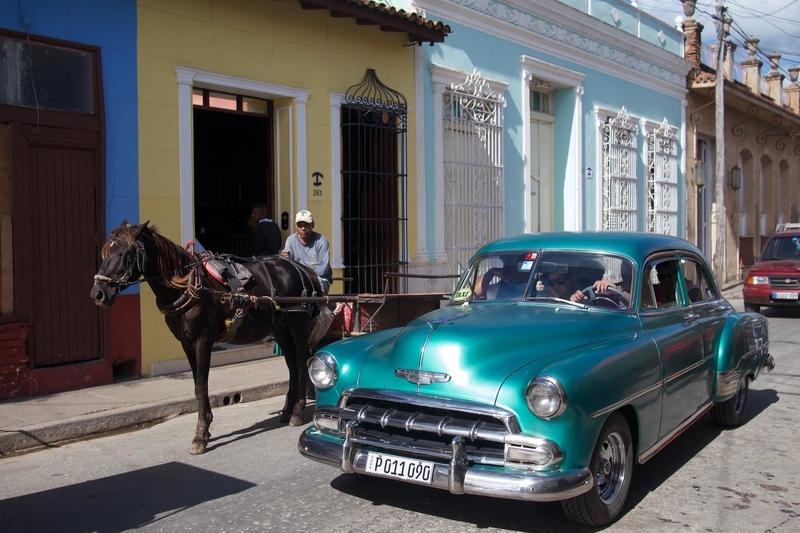
This tiny piece of picture-postcard heaven is exactly the time-warped cliche of Cuba that I’d had in my mind.
-
ARCHITECTURE IN OLD TOWN TRINIDAD
Val and I spent two days in Trinidad, following our unforgettable visit to Havana and Vinales. While there, we soaked in the city’s colonial charm and relaxed in its plazas with mojitos in hand. The city’s few attractions can easily be explored in an afternoon. So, instead of packing our itinerary with things to see and do, we simply savored the atmosphere of this colorful town.
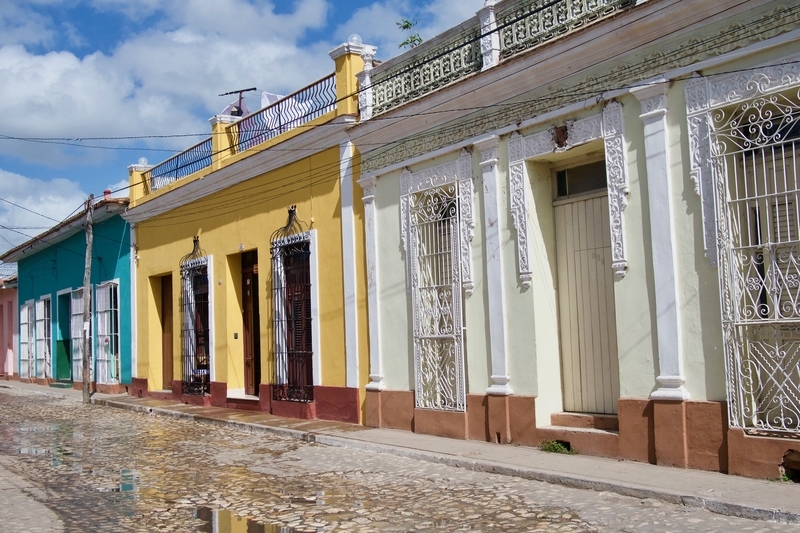
Trinidad was one of the first Cuban settlements founded by the Spanish in the 1500s. Noted today for its architecture and aesthetic appeal, this small city was once the hub of Cuba’s sugar industry. The 1700s sugar boom in Trinidad created a group of wealthy local sugar barons, who built magnificent estates and villas at the hands of imported African slaves.
Trinidad’s fortunes, though, eventually plundered. Slave uprisings and independence struggles took their toll on the Cuban sugar industry.
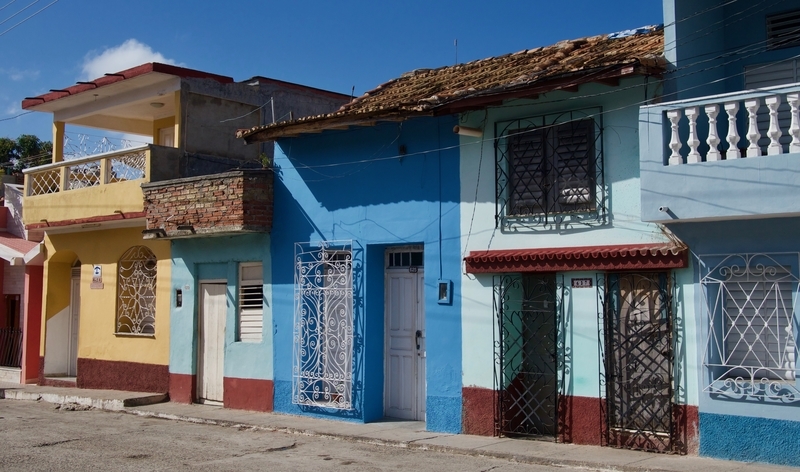
And when the industry finally collapsed in the late 1800s, Trinidad drifted into obscurity.
Sometimes good fortunes come in disguise. Thanks to the failure of its sugar industry in the 19th century, Trinidad has remained relatively unchanged over the past 200 years. With a stalemate in development and growth, this tiny colonial gem has largely avoided the rapid and sweeping changes of modernization.
-
PLAZA MAYOR
Plaza Mayor is the heart of Trinidad. A large plaza comprised of raised gardens, walkways, and cobblestoned streets, it houses many of the town’s museums, churches and most famous buildings–including the Museum of Colonial Architecture, the Museo Romantico and the Casa de Aldeman Ortiz.
Surrounding Plaza Mayor, Trinidad’s streets are a magnet for photographers. With pretty pastel houses and palm-lined plazas, the cobbled lanes of Trinidad showcase what are undoubtedly some of the finest examples of colonial architecture in the Americas.
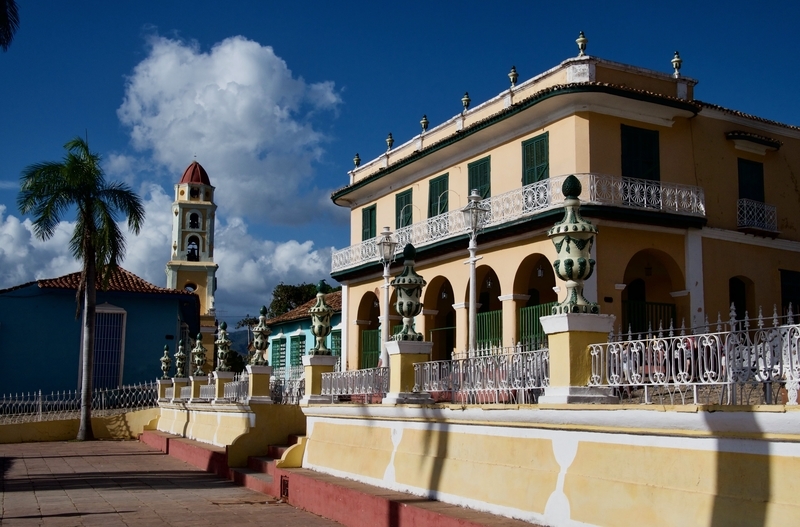
One must not stray far from the center of town, however, to see the Trinidad that lays behind the fresh coat of colorful paint. Our quick walk away from the city center in search of a money exchange office, brought us face to face with the neglected and run-down areas of the city.
-
THE TRINIDAD OUTSKIRTS
As with our walk down the Malecon in Havana, our visit to the outskirts of Trinidad was a reminder that, behind the city’s UNESCO-sponsored paint job, thousands of ordinary Cubans are merely scraping by–working hard for very little financial reward and eagerly awaiting their next month’s rations.
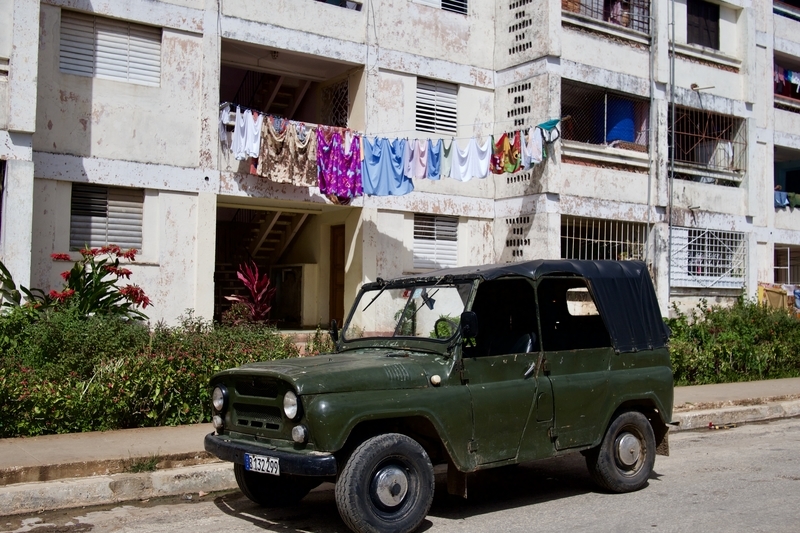
DAY 7 ITINERARY: VERADERO
After two days of wandering Trinidad’s pretty streets, Val and I planned on visiting nearby Playa Ancon. We were, after all, in the Caribbean. And who goes to the Caribbean without even setting foot in the water?
In researching Cuba’s best beaches, however, we felt we were missing out by skipping the famous powdery sands of northern Cuba. With limited time, we had to decide if we wanted to stick around the vicinity of Trinidad for another day, or make a pit stop to the resort-studded sands of Veradero en-route to Havana.
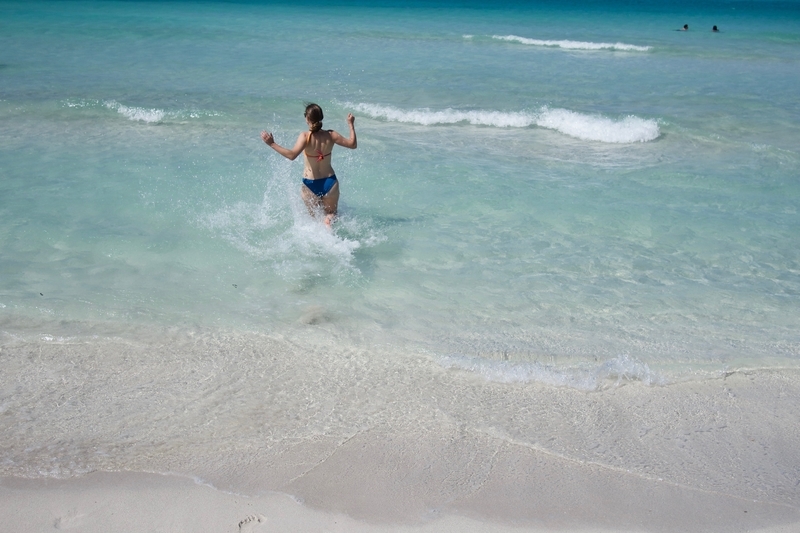
In the end, we chose the latter option.
We’re so glad we did.
-
WESTERN END OF VERADERO BEACH
While I do not doubt Playa Ancon’s beauty, I believe it would be difficult to top the perfection that we found in Veradero. The world-renowned beach at Veradero is an uninterrupted 20km stretch of white-blond sand that is undoubtedly one of the Caribbean’s best. I’ve hardly ever seen a beach so beautiful–save, perhaps, for the snowy sands of Shoal Bay Beach in Anguilla.
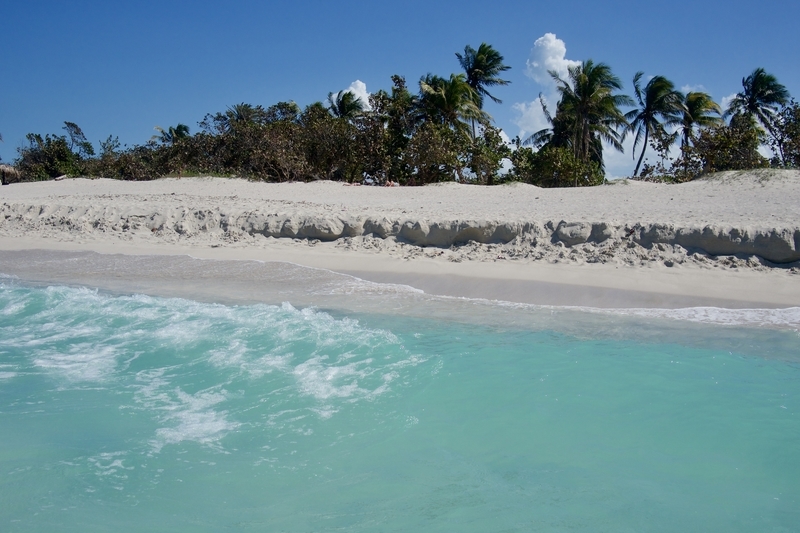
Veradero’s tourist-friendly shoreline is one of Cuba’s primary draws. But as anxious as I was to spend some time lazing in the sun at this picture-perfect place, I worried that I would be disappointed by Veradero’s crowds and commercialization. As one of the Caribbean’s premier resort destinations, I feared that our last day in Cuba would be spent in a place that so easily could have been elsewhere. I worried that, with its unsubtle development and large stash of hotels, Veradero would be a Disneyland of sorts–a place full of rowdy tourists looking for a packaged and sanitized Cuban experience.
It would be easy to visit Veradero and completely miss everything that makes Cuba unique. Knowing this, we stayed in an AirBnb along the western end of Veradero Beach, away from the large hotels. The western end of Veradero lies adjacent to town and is primarily filled with local tourists. Thus, for those seeking a slightly more authentic experience, it offers an escape from the hoards of partygoers and rows of beach umbrellas.
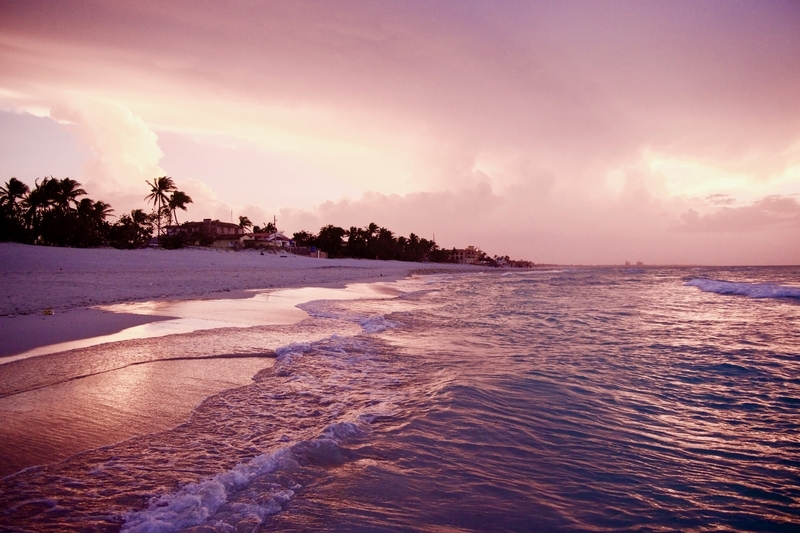
In staying away from the resorts, we found many signs of Cuba’s idiosyncrasies. We saw classic cars zooming down ocean avenues. We saw pop-up festivals with roller coasters that belonged in the Soviet era. We saw posters and billboards celebrating the leadership of Fidel Castro.
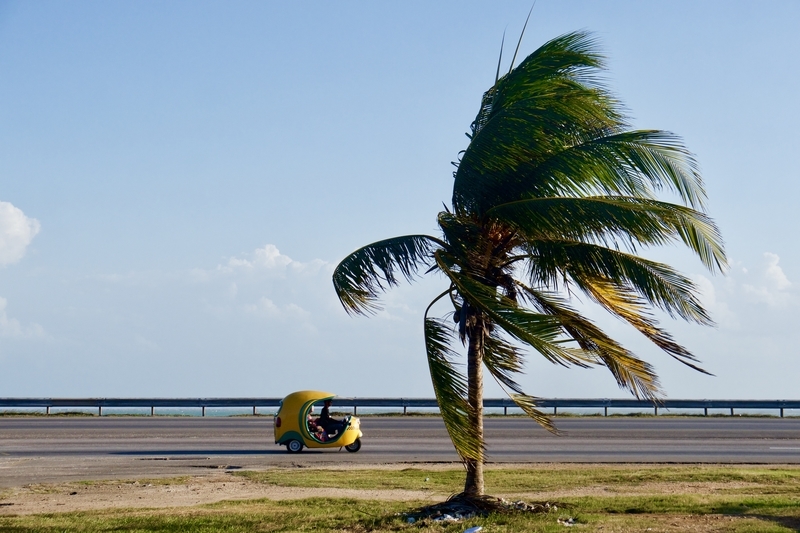
And when we decided to spend time relaxing at the public beach at the western end of the peninsula, we found its powdery sands to be largely empty.
INDEPENDENT TRAVEL TO CUBA
As someone who usually stays away from cruises and large group tours, I was thrilled when Obama lifted restrictions on travel to Cuba. But then Trump’s announcement had me scratching my head. Was independent travel to Cuba as an American still possible? Would I have to join an overpriced tour or a cruise in order to visit the land of salsa and cigars?
As it turns out, independent travel to Cuba is still much easier than it appears.
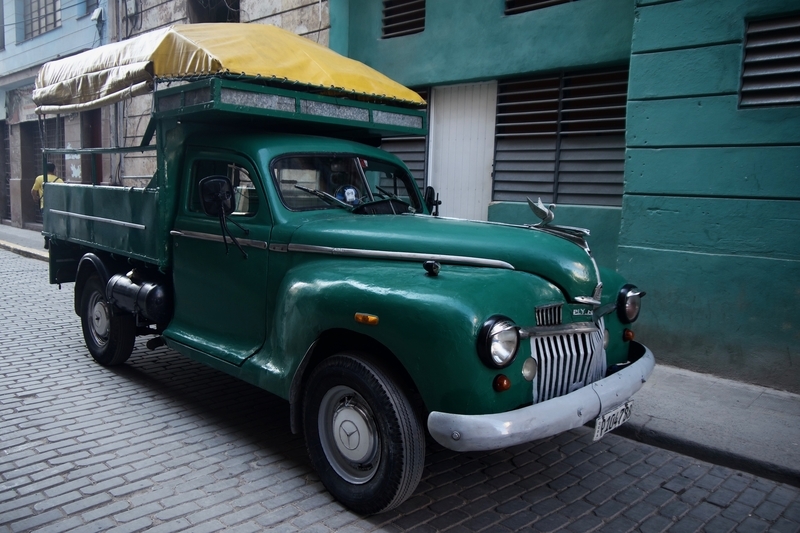
I spent one week in Cuba with my friend, Val, on a last minute decision to ditch the February cold that gripped the United States.
We met at the Atlanta airport, still unsure about the practicalities of entering the country legally. But the journey couldn’t have been more straightforward. At the Delta ticket counter, we bought a $50 visa, indicated that we were traveling in support of the Cuban people, and sauntered onto the plane.
US travelers to Cuba must fall under one of twelve categories in order to legally visit the country. As an independent traveler, selecting “support of the Cuban people” ensured that I could visit the island on my own terms without joining a cruise or pricy tour. In order to support the Cuban population, Val and I stayed in Casas Particulares (private homestays that can be booked on AirBnb) and made sure to avoid eating at state-owned restaurants. We bought paintings from local artists and ensured that the money we spent stayed out of government hands.
PRIVATE ENTERPRISE IN CUBA
Though Cuba’s communist regime has stamped out some of the inequality that plagues much of Latin America, one need not look far to see that life is a challenge on this small paradise island. There is very little room for upward mobility in Cuba and, until recently, many Cubans lived entirely off government rations. Under its communist leadership, traditional Cuban food left a lot to be desired due to a ban on private enterprise and a lack of ingredients in stores. Internet was almost entirely unavailable.
In recent years, however, the country has undergone a small, yet significant, transformation. Raul Castro’s reforms have given Cubans a glimpse into the world outside their little island and have made it marginally easier for most Cubans to make a living. Internet–though painful to obtain–has become available in some public places. Private restaurants have mushroomed. AirBnBs have given people access to disposable money.
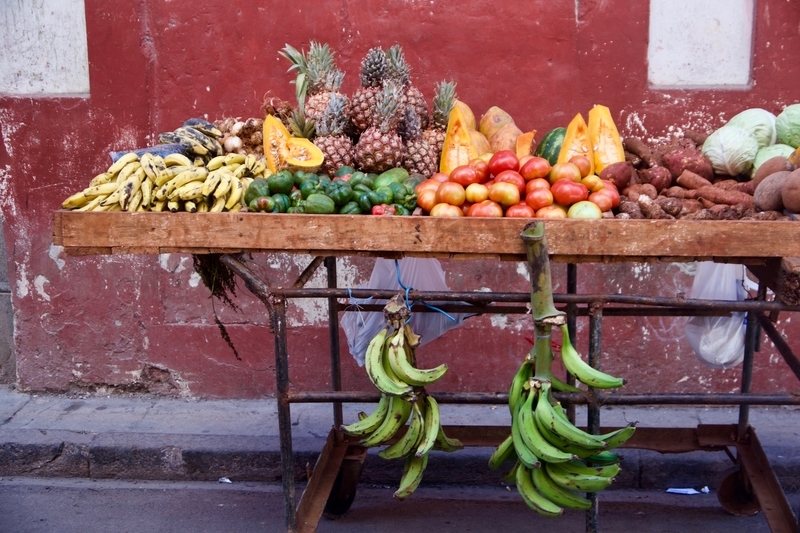
In Cuba, private enterprise is showing the first indications of a creative spring, though big-name American brands have yet to gain a foothold.
And yet despite the subtle changes since Raul Castro’s takeover in 2008, the colorful streets of Havana still evoke a feeling of stepping foot into a bygone era.
***
Cuba is a country of contrasts. And one that, as an American, I have difficulty categorizing.
Many tourists and armchair travelers are quick to point out what this small island nation has done right or wrong over the last half century. And while I have my own disjointed opinions on the “Cuba debate,” I realize that rarely are things so black and white. Undoubtedly, Cubans have struggled under the country’s communist regime. But it isn’t the impoverished and desperate place that many Americans claim it to be, either.
In Cuba, I didn’t see the levels of staggering poverty that I’ve seen elsewhere. And while my visit to the outskirts of Trinidad revealed the less-than-ideal living conditions of the country’s working class, I didn’t see homeless living on the streets. Nor did I see anything that would resemble the shantytowns found throughout much of Latin America. Sure, I was made aware of the struggles of daily life in Cuba (the wifi connectivity issues, the lack of produce in grocery stores, the rundown buildings, the long lines of people queuing to receive rations), but so too did I see a country that is beautiful, highly educated and on the brink of change.
Cuba is vibrant and complex. It is dripping with history and blanketed in natural beauty. It is enchanting, magical, colorful and musical.
And no matter what one’s thoughts are vis-a-vis the Castro legacy, a visit to Cuba is sure to leave a lasting impression.
__________________
Did You Enjoy this Seven Day Cuba Itinerary? Pin It!
